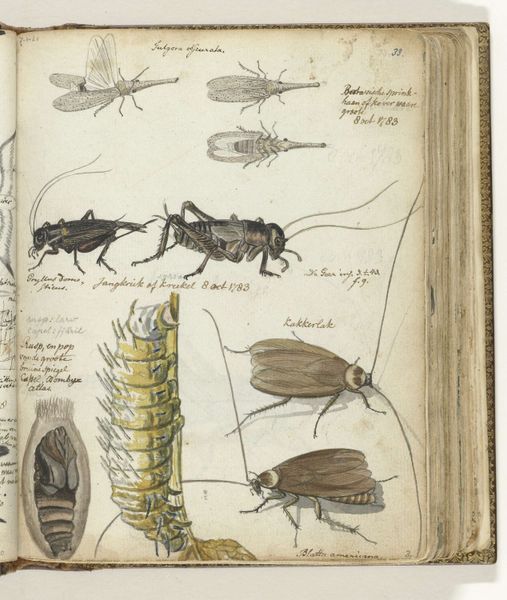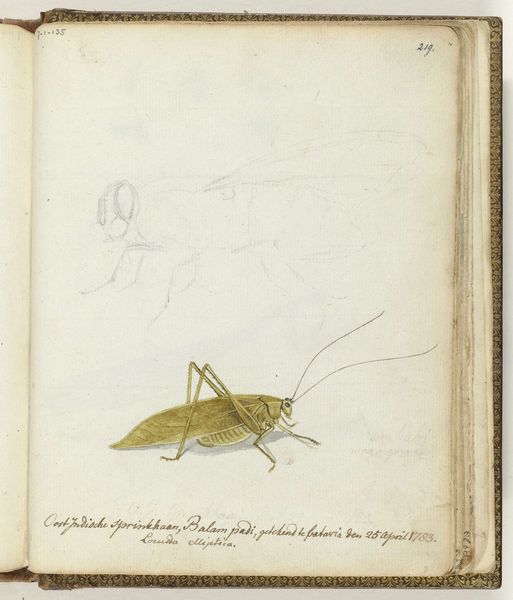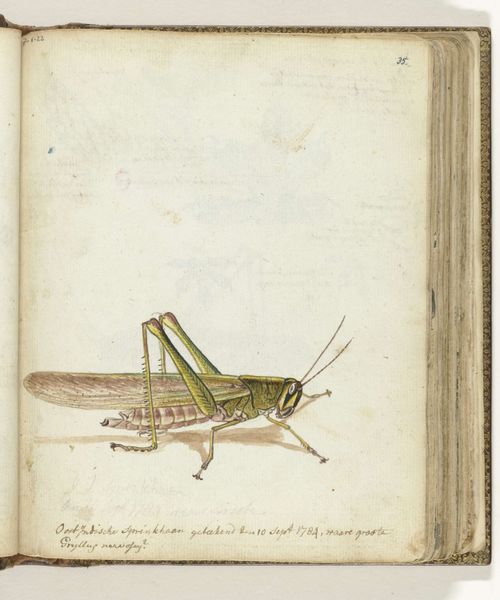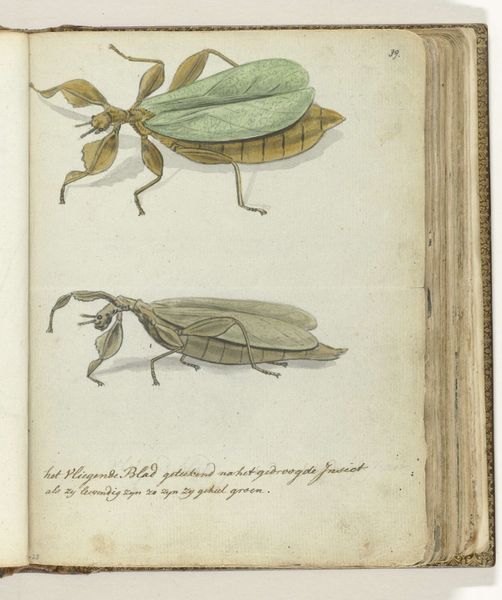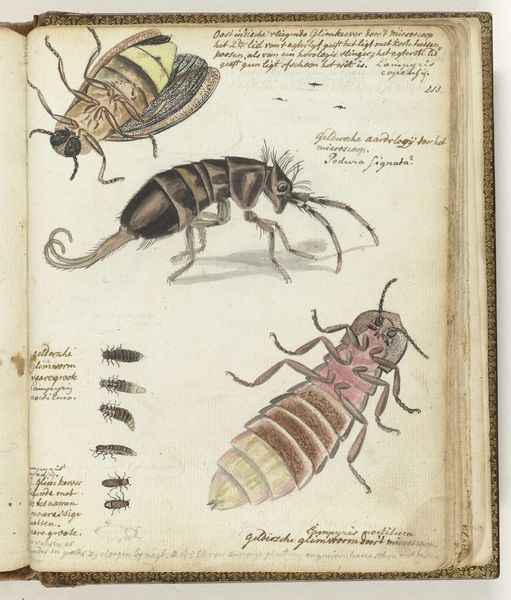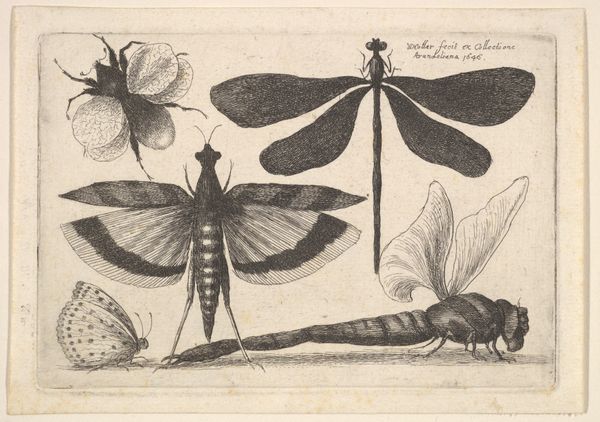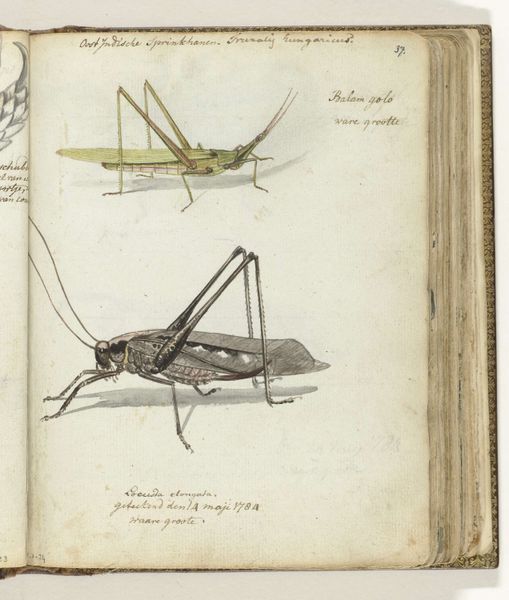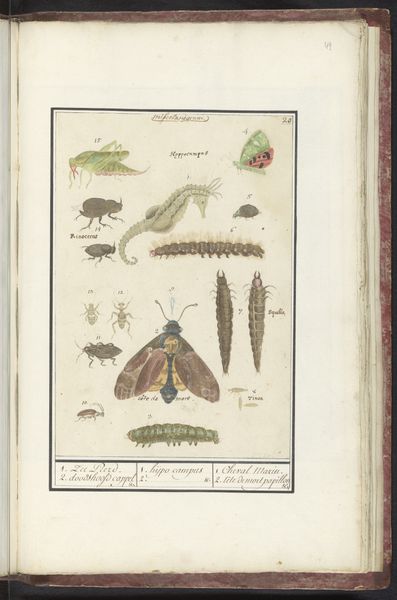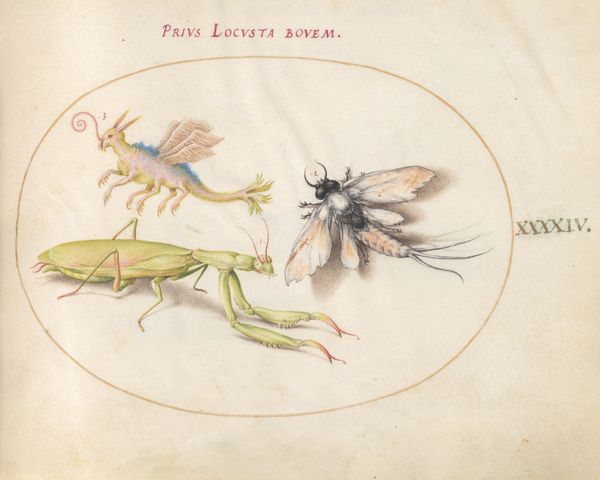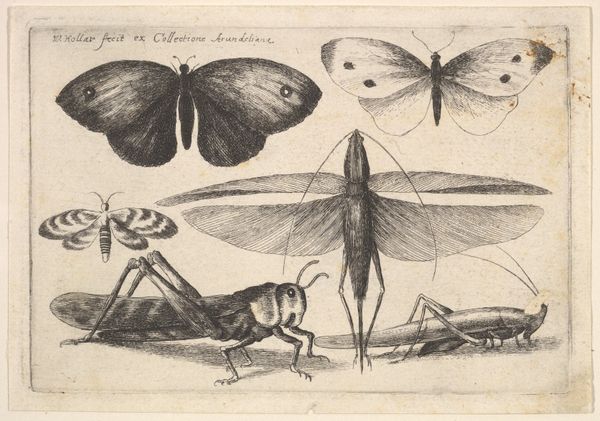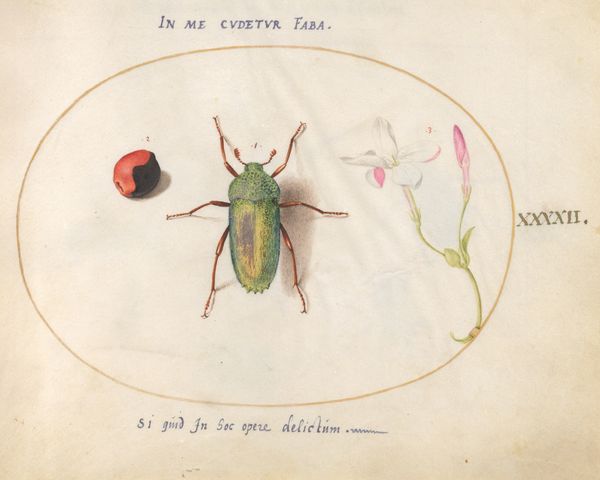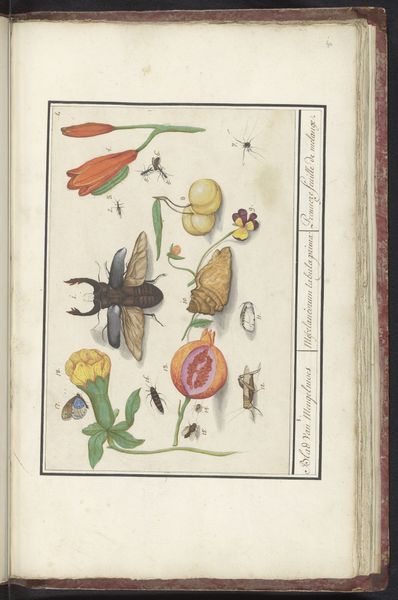
Dimensions: height 195 mm, width 155 mm
Copyright: Rijks Museum: Open Domain
Curator: Look at the exquisite detail in this drawing, "Hollandse kever en Javaanse rijstsprinkhaan," possibly created between 1770 and 1787 by Jan Brandes. The medium here appears to be watercolor, with some possible use of colored pencil. Editor: My first impression is one of stillness, almost a sense of scientific observation. The composition has these disparate elements – insects and a flower – isolated on the page, rendering it very curious. There is an inherent contrast of a common grasshopper alongside of small insects. Curator: Indeed. The artist's rendering reflects not only a study of nature, but also a meticulous hand at work. What can you tell me about Brandes' relationship with the material aspects evident here? Editor: He really showcases the intricacies of labor in rendering these specimens so meticulously. The clear scientific objective behind these illustrations is indicative of how Brandes' was trying to position and depict these creatures, maybe indicative of a form of forced and intentional subjugation during colonization. Curator: The social dimension of that time is incredibly relevant. Looking at Brandes, he probably had a very complex relation to colonization. It could be interesting to reflect upon who produced the paper and pigments themselves. It gives more meaning to the social-political context that may be influencing Jan Brandes. Editor: Yes, Brandes was known to explore identity through a socio-political lens; therefore, by examining such specimens and how the labour of colonization is related, we can perhaps read these insects not just as objects of study, but also as witnesses, or even symbols, of that era. This connects deeply with Brandes' historical context in the colony. Curator: Absolutely, situating it in relation to identity and colonialism invites rich inquiry. So, what closing impression does it leave you with now? Editor: This careful artistic examination is compelling in that the drawings not only demonstrate technical skill and reveal an understanding of the colonial contexts present but also highlight a quiet sense of history through each medium stroke. Curator: For me, looking again, it emphasizes how the materials themselves were likely influenced by socio-economic elements as the meticulous labor involved highlights the complicated aspects surrounding material access, consumption, and distribution practices.
Comments
No comments
Be the first to comment and join the conversation on the ultimate creative platform.

